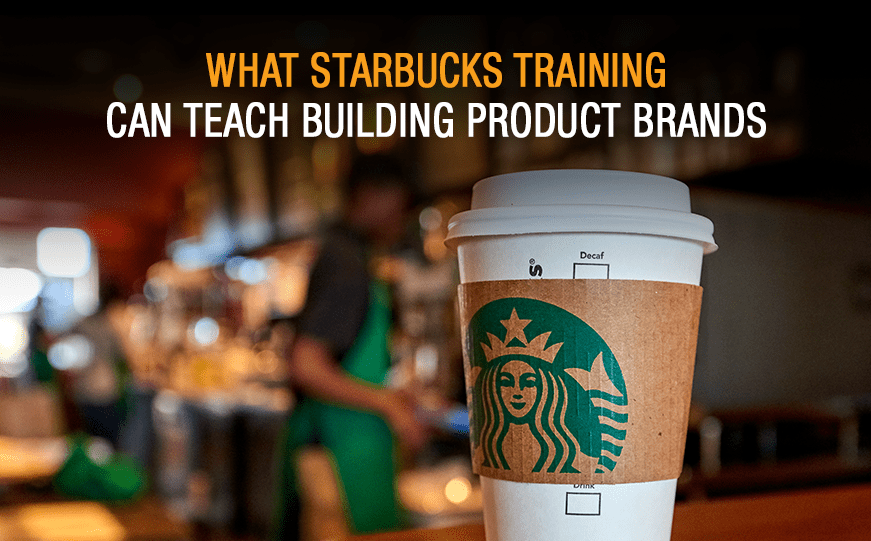People Over Chatbots: Why Sales and Marketing Alignment Matters
Starbucks is seeking to reverse six straight quarters of a sales slump with increased customer care training… choregraphing its baristas how to be “extra friendly.” At first glance, that might sound like a small cultural shift. But analysts are celebrating this campaign as a serious strategy of leveraging (better) the brand’s existing promise of authentic human connection.
How relevant for building product manufacturers too.
In an era where AI and chatbots dominate the news – the most powerful driver of growth can be a customer-facing team – especially if they’re equipped with the right messaging and process.
And when fully aligned across sales and marketing functions.
When Buyers Want More Than a “Clanker”
AI has its ever-increasing importance. And leadership is vigilant about leveraging productivity tools.
After all, automation can streamline processes – provide 24/7 answers – while handling repetitive inquiries. But architects, contractors, designers, and facility managers don’t want to be relegated solely to machines.
These professionals are making critical, high-value decisions about construction products that affect their projects. They need trust and actionable insights that instill confidence. A chatbot can confirm if an item is in stock… it takes a knowledgeable and empowered advocate to explain installation requirements or warranty details.
Even how a product fits, into code compliance.
That human connection – and the trust factor it creates – can be the difference between a spec that “sticks”.
Or one that gets swapped out… for a competitor’s product.
How to Create Subject Matter Experts
Employees are more than mere brand representatives. Rather, they can be offered to the channel as subject matter experts. When sales reps, technical specialists and customer service teams know products “inside and out” they can help elevate the brand’s promise, as trusted advisors.
Advocacy doesn’t stop at the office. Team members talk about products on job sites – at industry events – and yes, even on their own social channels. That kind of authentic, word-of-mouth endorsement builds credibility that no advertisement can deliver.
Here are 5 tips to influence brand apostles:
- Invest in ongoing education. Products, building codes and project requirements are always evolving. Regular training and hands-on workshops – even certification opportunities – ensure teams stay current. And remain confident.
- Equip teams with the right tools. A centralized hub with connection to spec sheets, case studies, installation guides, and FAQs gives customer-facing staff instant access to the information they need… on job sites and in distribution partner communications.
- Encourage collaboration across teams. Sales, marketing and technical staff must offer to regularly share insights, so training should highlight the features and benefits of each product. And most importantly, how it’s being used in the field.
- Recognition reinforces the value of expertise. Spotlight employees who share knowledge effectively – whether that’s dutifully answering customer questions – or presenting at events and helping colleagues.
- Promote employee advocacy. Empower teams to share stories, project photos or product tips through their own networks… adding “authentically” to sales and marketing alignment.
The Cost of Disengagement
Ignoring this opportunity can result in disengaged or uninformed employees… who can inadvertently damage a brand. When representatives give inaccurate information about installation – don’t follow through – or if a marketing promise isn’t backed up in the field, hard-earned brand reputation takes the hit.
Breaking Down Silos: Aligning Sales and Marketing
For manufacturers, misalignment between sales and marketing is one of the biggest barriers to growth. Marketing mustn’t develop content or messaging without input from the field. Sales teams, who gather insights from daily interactions with builders and specifiers, need to develop a process to funnel those insights back to marketing.
When the two teams are aligned:
- Sales can share real-world objections and conerns from architects and contractors.
- Marketing can translate those insights into better tools, technical resources, and campaigns.
- Employees across the organization stay informed, engaged, and consistent in how they represent the brand.
The result? Stronger customer interactions. Specifications that stick. And a more trusted reputation in the marketplace.
Human-Centered Marketing in a Product-Heavy Industry
For construction products – decisions are made by people – like architects, balancing aesthetics and performance. As well as contractors, juggling budgets and schedules. And distributors. weighing inventory risk.
Technology can support the process, but it can’t replace trust.
Teams – backed by aligned sales and marketing programs – are the ones who can deliver that trust. After all, they turn product specs into real-world solutions.
And prospects… into long-term partners.
Kleber & Associates specializes in helping building product brands align sales and marketing teams – with the right tools and insight strategies – they need to succeed.
If you want to drive specifications. Win more bids. And strengthen customer relationships, consider the free resource guide below or contact sk@kleberandassociates.com to get the conversation started.





